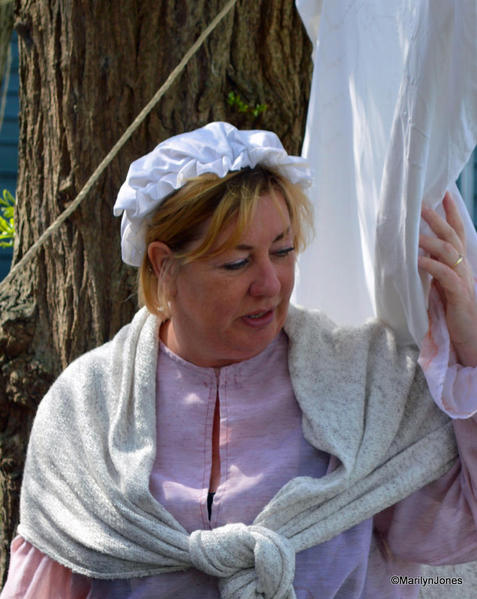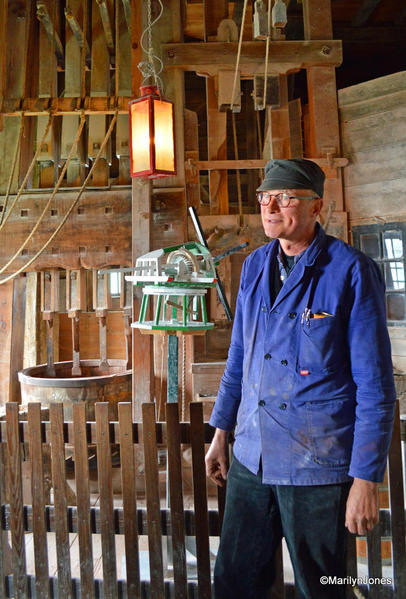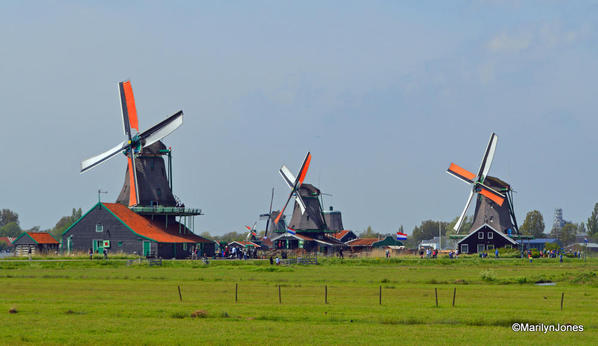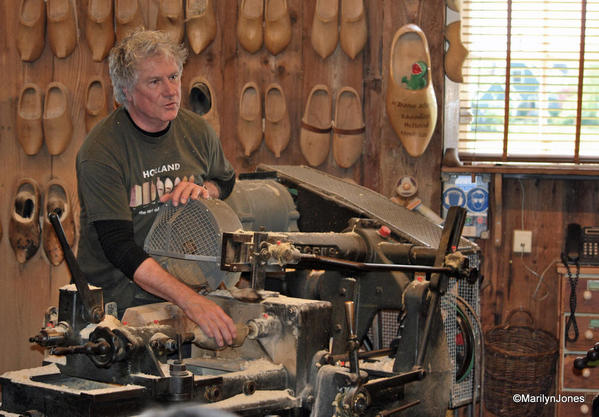The last day of my AmaWaterways Tulip Time river cruise I visit Zaanse Schans near Amsterdam. At first glance it seems like an elaborate theme park celebrating Dutch history, but in actuality, this is a historic community with an interesting and significant past.
Some 250 years ago, more than 600 windmills were located in this community along the Zaan river; the first industrial site in the world. The windmills were used to make shelves, paint, mustard, oil, paper and other items.
 (People go about in period costumes)
(People go about in period costumes)
What you find today are authentic Dutch windmills, barns, houses and museums, all built in the typically Dutch wooden architectural style, and all moved to this central location in the community—piece by piece—over the past 50 years.
Touring
One of the first buildings I enter is a 250-year old warehouse where demonstrations show how wooden clogs are made. A craftsman uses a century-old machine to carve out the clog by copying another one. Start to finish is no more than 10 minutes.
(the clogs are shaped....)
The wooden shoe was, and still is, the perfect working shoe: waterproof, indestructible, and much cheaper and faster to make than the modern work shoe. It is still used on many farms and by truck-drivers.
(next the inside of the clog is hollowed out....)
Also in this building is a clog museum; the largest and finest collection of its kind in the world. You can purchase clogs and other souvenirs here before moving on to other buildings, demonstrations and history
(....and we have a finished shoe!)
Next I decide to learn more about the industrial side of the windmill and not just its water pumping abilities. I pass by several costumed interpreters going about their daily chores as the Dutch would have in the 17th and 18th centuries.
 (A miller explaining how a windmill works.....)
(A miller explaining how a windmill works.....)
Past houses and a dairy farm, I walk along the river until I come to a windmill where chalk is being ground to make paint. The process is brought to life by a miller as he offers excellent explanations and demonstrations.
Guests are also invited to climb a ladder to the loft where they can get a better view of the windmill mechanics.
Although I would have liked to have stayed longer to look around other areas and shop, I am glad I spent my time learning how clogs are made and the industrial place the windmill has in Dutch history.
If you go:
- The Zaanse Schans is located just outside Amsterdam. Boat rides and restaurants are also available here. Admission is free with the exception of some attractions where a nominal fee is charged. For more information: www.dezaanseschans.nl/en.
- AmaWaterways features river cruises in Europe, Africa and Asia. Complimentary smallgroup excursions, with guides and headsets, are offered daily. For more information: www.amawaterways.com.











Comments (0)